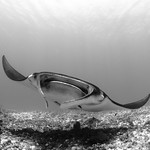Aerial photography is an interesting field of photography. Becoming airborne and shooting the landscape, cityscapes, or sceneries from perspectives we usually are not used to. This gives images a special and unique touch mainly by means of perspective but also by means of color contrast and composition.
There are several possibilities to get into these arial perspectives such as tall buildings, a flight in a plane, or a flight in a helicopter, or in recent times using drones and camera remote control.
From a plane:
 Becoming airborne is probably the most spectacular and only true way to do arial photography. A couple of years ago I hired a little plane and made a sight seeing flight around the most scenic parts of the central Swiss alps.
Becoming airborne is probably the most spectacular and only true way to do arial photography. A couple of years ago I hired a little plane and made a sight seeing flight around the most scenic parts of the central Swiss alps.
Working good together with the pilot it is possible to get very special shots from viewpoints which are usually not accessible.
Such images are special not only by means of composition, color, and perspective, but also unique. Since compared to other images of comparable landmarks most of the time no second image has been shot from the same point of view.
The two images here showcase the highest mountains of the central Swiss alps from different perspective.
On the right hand image there is a top view of the village of Bellwald. A very traditional and picturesque village which is worth visiting for a photography trip also on ground.
The difficult thing in planes and helicopters are reflections of the windows. Hence, to capture really good and valuable images one needs to keep doors open which needs extra equipment for securing photographers and equipment and which depending on the air-vehicle is not always possible.
There are several possibilities to get into these arial perspectives such as tall buildings, a flight in a plane, or a flight in a helicopter, or in recent times using drones and camera remote control.
From a plane:
Working good together with the pilot it is possible to get very special shots from viewpoints which are usually not accessible.
Such images are special not only by means of composition, color, and perspective, but also unique. Since compared to other images of comparable landmarks most of the time no second image has been shot from the same point of view.
The two images here showcase the highest mountains of the central Swiss alps from different perspective.
On the right hand image there is a top view of the village of Bellwald. A very traditional and picturesque village which is worth visiting for a photography trip also on ground.
The difficult thing in planes and helicopters are reflections of the windows. Hence, to capture really good and valuable images one needs to keep doors open which needs extra equipment for securing photographers and equipment and which depending on the air-vehicle is not always possible.































